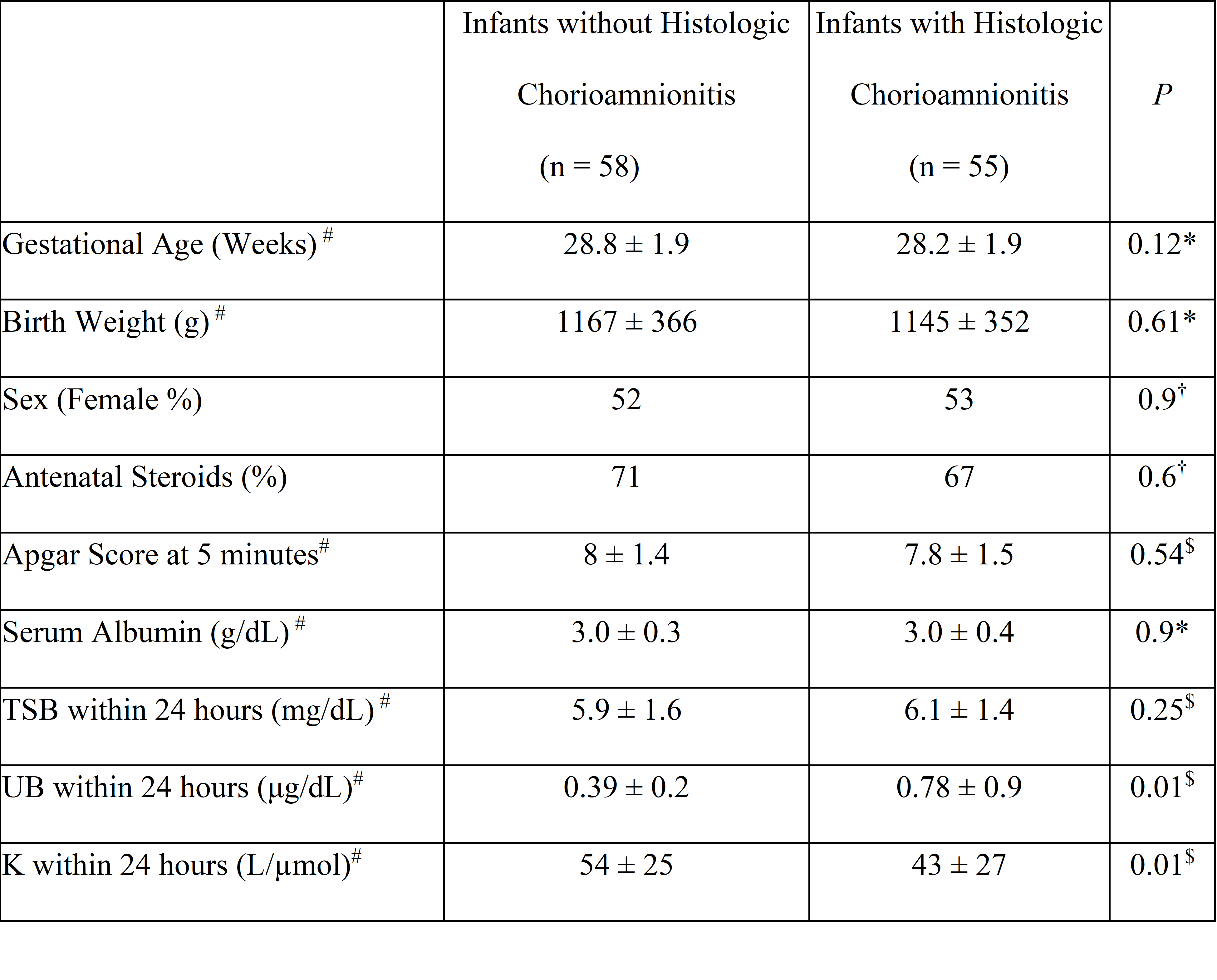Neonatology
Session: Neonatal Infectious Diseases/Immunology 1
590 - Histologic Chorioamnionitis and Unbound Bilirubin in Premature Infants
Friday, May 3, 2024
5:15 PM - 7:15 PM ET
Poster Number: 590
Publication Number: 590.497
Publication Number: 590.497
- SA
Sanjiv B. Amin, MD, MS (he/him/his)
Professor
Children’s Hospital of Michigan
Detroit, Michigan, United States
Presenting Author(s)
Background: Unbound bilirubin (UB), bilirubin not bound to albumin, crosses the intact blood brain barrier and the neuronal cell membrane ultimately leading to neuronal injury. UB concentration depends on total serum bilirubin concentration (TSB), albumin concentration, and/or bilirubin albumin binding affinity (K). Early-onset culture positive sepsis has been shown to be associated with decreased K and an increase in UB concentration in premature infants. Thus, it is plausible that histologic chorioamnionitis may have a similar effect on K and UB; however, this has not been well studied.
Objective: To evaluate the association of histologic chorioamnionitis with bilirubin albumin binding affinity and UB in ≤ 32 weeks gestational age (GA) infants
Design/Methods: We performed a prospective observational study involving ≤ 32 weeks GA infants at birth who had placental evaluation for histologic chorioamnionitis by pediatric pathologist. Infants with asphyxia (Apgar score ≤3 at 5 minutes and/or cord pH < 7 ), early-onset culture positive sepsis, chromosomal disorders, hemolysis (maternal and infant blood group mismatch with a positive indirect or direct coombs test), conjugated hyperbilirubinemia, or hypoxia (PaO2 ≤ 45 mm Hg) and/or acidosis (pH ≤7.25) prior to UB measurement were excluded. TSB and UB were measured using the same aliquot of blood collected within 24 hours after birth. UB was measured by the modified peroxidase method. Serum albumin was measured using the bromocresol green method. The UB, corresponding TSB, and serum albumin were used to calculate the K (L/μmol) using the law of mass action equation.
Results: A total of 113 infants ≤32 weeks GA were studied. Among 113 infants, 55 infants had histologic chorioamnionitis. There were no differences in GA, birth weight, sex, antenatal steroid exposure, and Apgar score at 5 minutes between infants with and without chorioamnionitis (Table 1). Despite similar TSB and serum albumin, the UB was higher; and the K was lower in infants with histologic chorioamnionitis compared to infants without histologic chorioamnionitis (Table 1). On regression analyses, histologic chorioamnionitis was associated with a decrease in K (Coefficient -10.3, 95% CI: -20.1 to -50.1) and an increase in UB (coefficient 0.3; 95% CI:0.11-0.62) after controlling for GA.
Conclusion(s): Histologic chorioamnionitis may be associated with a decrease in bilirubin-albumin binding affinity and an increase in UB concentration in ≤32 weeks GA infants. Histologic chorioamnionitis should be considered as a clinical risk factor for bilirubin-induced neurotoxicity in premature infants.

